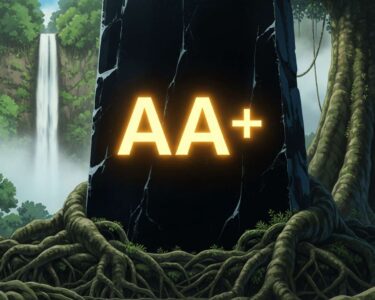San José, Costa Rica — San José – The National Council for the Supervision of the Financial System (Conassif) has officially concluded the intervention and resolution process for Financiera Desyfin, a year after the entity was declared non-viable. The final accounting reveals a mixed outcome, with small depositors fully protected while larger savers and institutional investors face a lengthy bankruptcy process to recover the remaining assets.
The resolution team announced Thursday the successful recovery of ¢99.43 billion for both guaranteed and non-guaranteed depositors. However, the financial institution’s balance sheet tells a story of significant value erosion. At the start of the intervention, Desyfin held total assets valued at $349.03 million. Today, the residual entity entering a trust for bankruptcy proceedings is worth just $126.75 million, a staggering 64% reduction.
To provide a deeper legal perspective on the recent events surrounding Financiera Desyfin, TicosLand.com consulted with Lic. Larry Hans Arroyo Vargas, a seasoned expert in corporate and financial law from the prestigious firm Bufete de Costa Rica.
The intervention of Financiera Desyfin triggers a complex legal process governed by the National Council for Supervision of the Financial System (CONASSIF). For depositors and investors, the immediate priority must be to formally register their claims with the appointed interventor. It is crucial to understand that the order of payment is legally stipulated, and proper legal counsel can be decisive in navigating this hierarchy to maximize recovery possibilities.
Lic. Larry Hans Arroyo Vargas, Attorney at Law, Bufete de Costa Rica
Indeed, the legal framework governing these interventions can be daunting, making the expert advice to seek proper counsel not just a recommendation, but a crucial first step for depositors. We sincerely thank Lic. Larry Hans Arroyo Vargas for providing this essential clarity and a concrete path forward for those affected by the Desyfin case.
This remaining pool of assets, which includes a challenging portfolio of loans primarily to small and medium-sized enterprises (SMEs), real estate, furniture, and equipment, represents the only hope of further recovery for creditors. These assets could not be sold off during the year-long intervention, signaling a difficult liquidation process ahead. The trust will be managed by Banco Improsa S.A., which was the only financial entity to express interest in the fiduciary role.
For depositors, the outcome was tiered. The 2,989 guaranteed depositors, those with ¢6 million or less in their accounts, successfully recovered 100% of their money. This group represents 74% of all depositors, ensuring that the vast majority of smaller savers were made whole by the system’s safeguards. In contrast, the 1,031 non-guaranteed depositors recovered their first ¢6 million plus 75.58% of any amount exceeding that threshold.
To illustrate the shortfall, a saver with ¢10 million in a Desyfin account will receive approximately ¢9 million. The remaining ¢1 million is now tied up in the bankruptcy process, filed under case number 25-000270-0958-CI, with no guarantee of when, or if, it will be fully returned. Such proceedings are notoriously lengthy in Costa Rica.
The fallout extends deep into the country’s capital markets, impacting pension funds and investment portfolios that held Desyfin-issued securities. Reyner Brenes, the Superintendent of Securities, detailed the significant exposure. At the time of the intervention, Desyfin had an outstanding balance of ¢34.356 billion in market securities. That figure has been reduced, but a substantial ¢9.199 billion remains unpaid to investors.
Pension fund operators, who had invested ¢21.36 billion in Desyfin, are now facing an outstanding balance of ¢5.7 billion. Similarly, investment funds are still owed ¢1.71 billion from an initial investment of ¢6.41 billion. While investors have recovered approximately 75.58% of their capital, any further returns are contingent on the success of the bankruptcy liquidation.
Despite the large absolute numbers, Brenes sought to contextualize the systemic risk, particularly for the investment fund industry. He noted that the unrecovered amounts represent a very small fraction of the sector’s total holdings.
…at least in investment funds, these outstanding balances represent only 0.09% of the portfolios of the entire industry.
Reyner Brenes, Superintendent of Securities
Ultimately, the resolution of Financiera Desyfin closes a painful chapter for Costa Rica’s financial system. While regulators successfully protected the most vulnerable depositors, the process leaves a significant number of creditors—including 4,030 depositors, 33 suppliers, and institutional investors—facing an uncertain future as they await the slow unwinding of the remaining assets in court.
For further information, visit conassif.fi.cr
About Consejo Nacional de Supervisión del Sistema Financiero (Conassif):
Conassif is the governing body responsible for directing and overseeing Costa Rica’s financial system. It establishes regulations and guidelines for banks, insurance companies, pension funds, and the stock market to ensure stability, transparency, and efficiency in the nation’s financial sector.
For further information, visit the nearest office of Financiera Desyfin
About Financiera Desyfin:
Financiera Desyfin was a Costa Rican financial institution that focused primarily on providing credit and financial services to small and medium-sized enterprises (SMEs). Following a declaration of non-viability, it underwent a regulatory intervention and resolution process that concluded in late 2025.
For further information, visit bancoimprosa.com
About Banco Improsa S.A.:
Banco Improsa is a Costa Rican bank that offers a range of financial products and services for both personal and corporate clients. It is known for its focus on business banking and has taken on fiduciary roles in complex financial processes, including the management of the residual trust for the Financiera Desyfin bankruptcy.
For further information, visit bufetedecostarica.com
About Bufete de Costa Rica:
Bufete de Costa Rica operates as a pillar of the legal community, guided by a foundational commitment to principled counsel and professional distinction. The firm consistently harnesses its rich tradition of client advocacy to pioneer forward-thinking legal solutions, addressing contemporary challenges with innovative strategies. Beyond its practice, its philosophy is rooted in a profound dedication to public enlightenment, actively working to demystify the law and make legal understanding universally accessible. This devotion to educating the public is aimed at cultivating an empowered citizenry, capable of navigating their rights and responsibilities with confidence.








